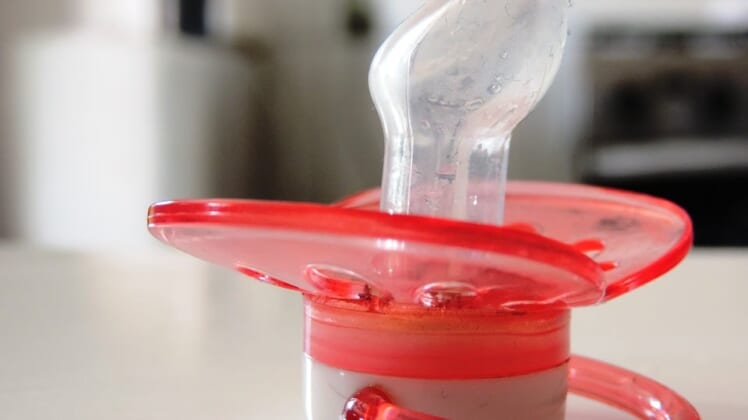
What kind of pacifier should I buy?
Find pacifiers with a shape your child likes. You may have to experiment a bit before you find something that works. Choose a sturdy one-piece type with a soft nipple and ventilation holes (without them, saliva can collect behind the base, irritating the skin around the mouth and causing a rash). The shield surrounding the nipple should be at least one and a half inches across, to prevent your child from pulling the entire pacifier into his mouth (and choking or even swallowing it). Replace your child’s pacifiers as they become worn. Don’t attach a pacifier to his shirt with a ribbon or string; he might wind this around his neck or wrist and harm himself. Finally, for easier cleanups, purchase pacifiers that are dishwasher-safe.
Should I look for an “orthodontic” nipple?
Not necessarily. Squarish “orthodontic” nipples are designed to promote tooth and mouth development, but it’s the intensity of the sucking, not the pacifiers itself, that determines whether your child will have dental problems.
How should I care for the pacifier?
Sterilize it before using it for the first time: Bring a pot of water to the boiling point, and drop in the pacifier. Turn off the heat. When the water has cooled, remove the pacifier and let your child try it. After that, wash it regularly in a dishwasher or with hot soapy water, rinsing thoroughly. Wash the pacifiers frequently if your child has a cold in order to keep it as germ-free as possible, and rinse the pacifier if it falls to the ground.
References
American Academy of Pediatric Dentistry. http://www.aapd.org/publications/brochures/tfphabits.asp
Last Updated: March 11, 2015
Baby and Child Care Health Library Copyright ©2015 LimeHealth. All Rights Reserved.
